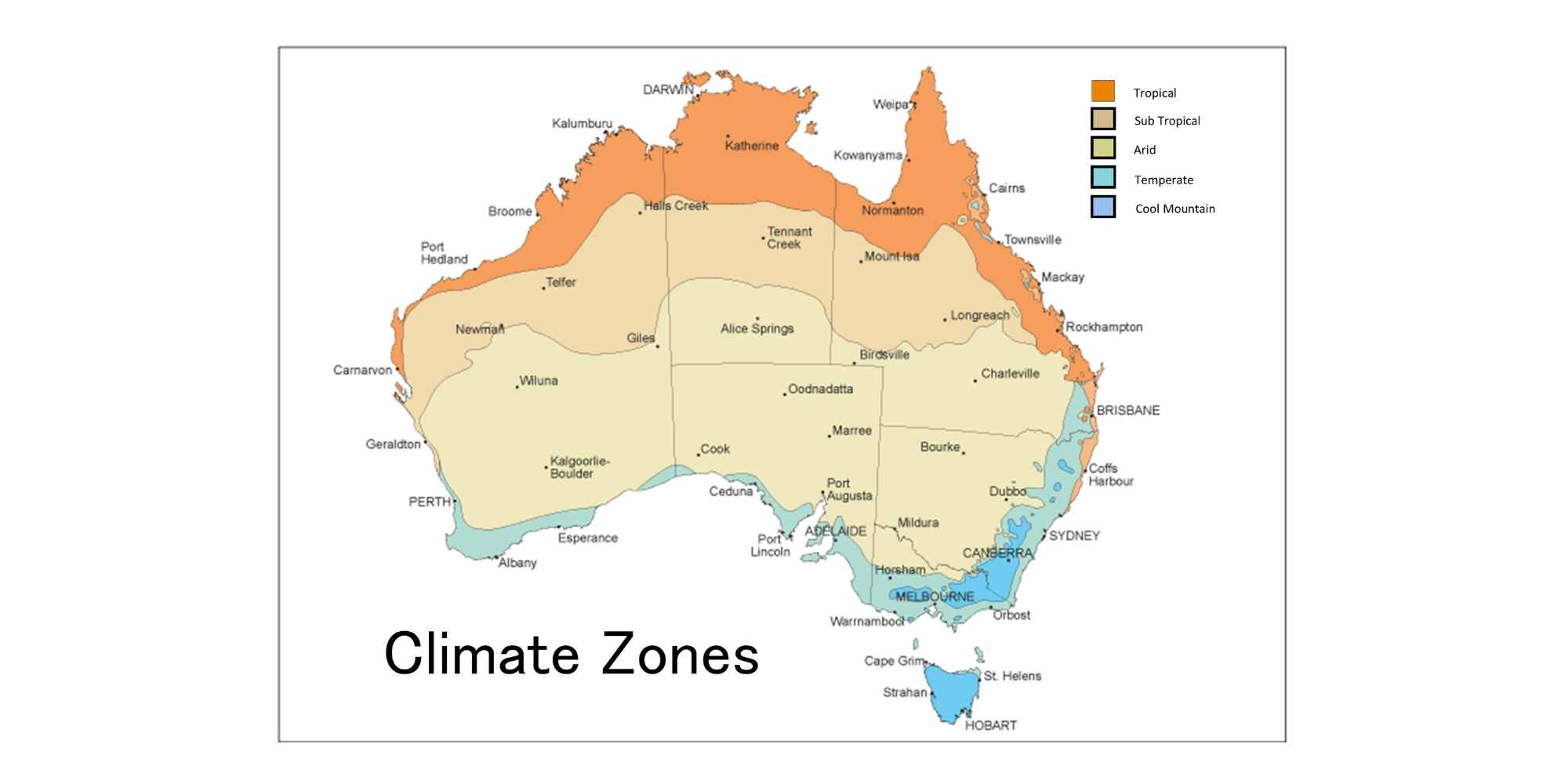Climate Zones

As you travel across Australia, you notice a huge variety in the terrain. The deserts around Alice Springs are different from the tropical wetlands of Kakadu or the temperate rainforests of Cradle Mountain. The reason we have so many different environments is that Australia covers a large range of climate zones. These are regions of the world that experience similar temperature and rainfall. The location of climate zones is largely determined by the sun.
Where you live determines when to sow your seeds successfully or if it is worth trying at all. Determining your climate zone, will provide the optimal planting window for growth and productivity.
Tropical
Areas near the equator get direct sunlight all year round, meaning that at noon the sun is right overhead. This is called the tropical zone. When the sunlight hits the surface of the earth or the ocean it warms the air, causing it to rise. The warm air cools as it rises, and the water in the air condenses and falls as rain. The tropical zone is warm and humid most of the year, with a clear wet and dry season as the tropical rain belt shifts south and then north of the equator. It extends across the north of Australia from Canarvon through Port Hedland, Broome, Darwin, Cairns, and south to Rockhampton.
Sub Tropical
If you move further away from the equator, you enter the subtropical zone. This is where the warm rising air air from the tropics falls as dry, cooler air. Summers are hot, winters are mild. It includes the eastern seaboard from Rockhampton to Brisbane and coastal Western Australia from Geraldton to Canarvon.
Arid
This climate zones receive very little precipitation, usually less than 30 cm per year and they typically have clear skies because any moisture is quickly evaporated. This zone crosses Australia from inland Western Australia to the Great Dividing Range in the East. It includes all the inner desert areas.
Temperate
The Earth is round, so sunlight hits the temperate areas on more of an angle then at the equator. The same amount of energy then has to cover a larger area so it’s cooler here than in the tropics. The Earth is also tilted, so as we move around the sun during the year, temperate zones receive less direct sunlight in winter and more in summer.
Places in the temperate zone have distinct seasons, with warm, long days in summer, and cold, short days in winter. Most regions in the temperate zone also tend to receive more rainfall in winter than in summer. It includes inland Queensland, New South Wales tablelands and coastal region south of Sydney, and much of southern coastal Australia from Melbourne, Adelaide through to Perth.
Cool Mountain
Our coldest climate zone has mild or warm summers with cold winters and frosts. It includes the high areas of the New South Wales Northern Tablelands, the Southern Tablelands, the Australian Capital Territory, and most of Tasmania.






